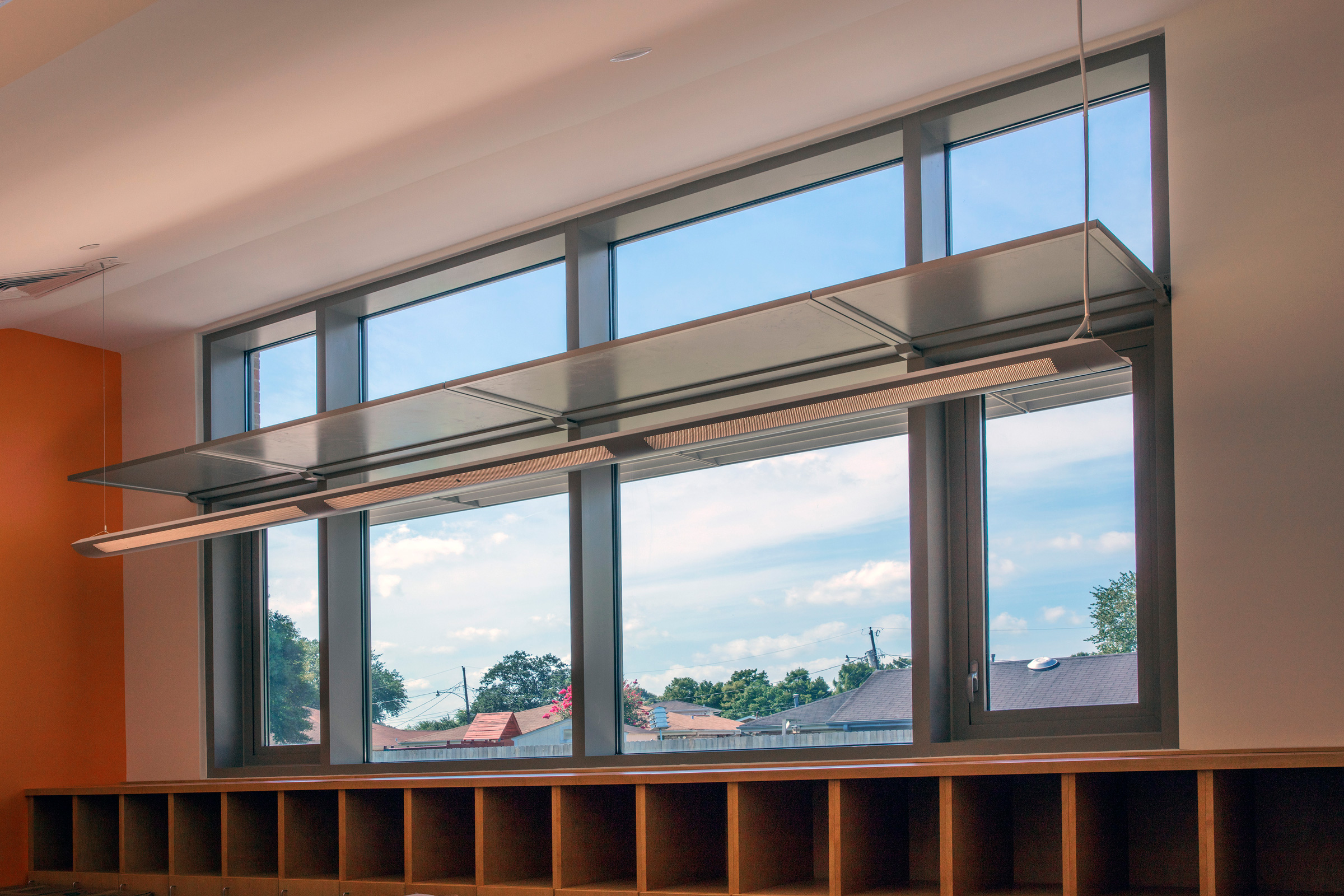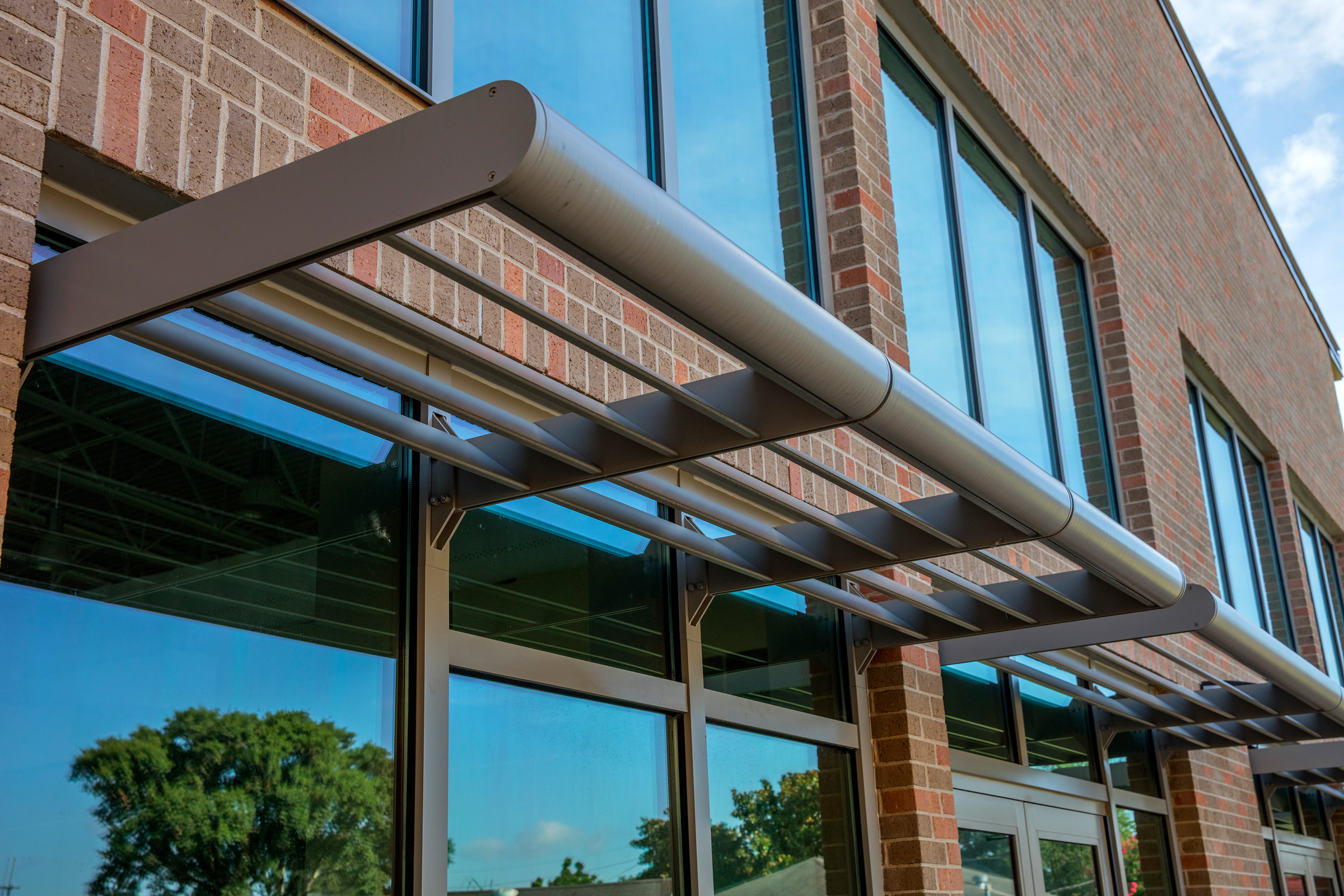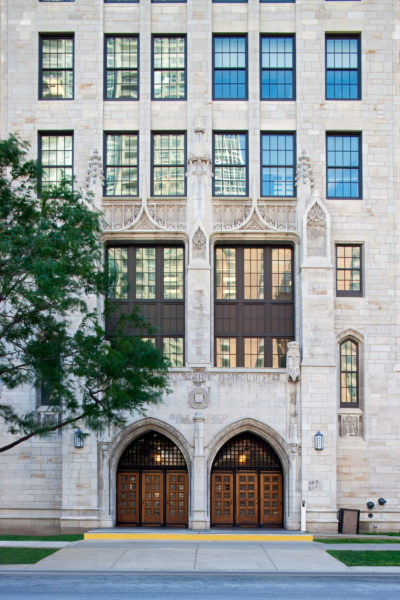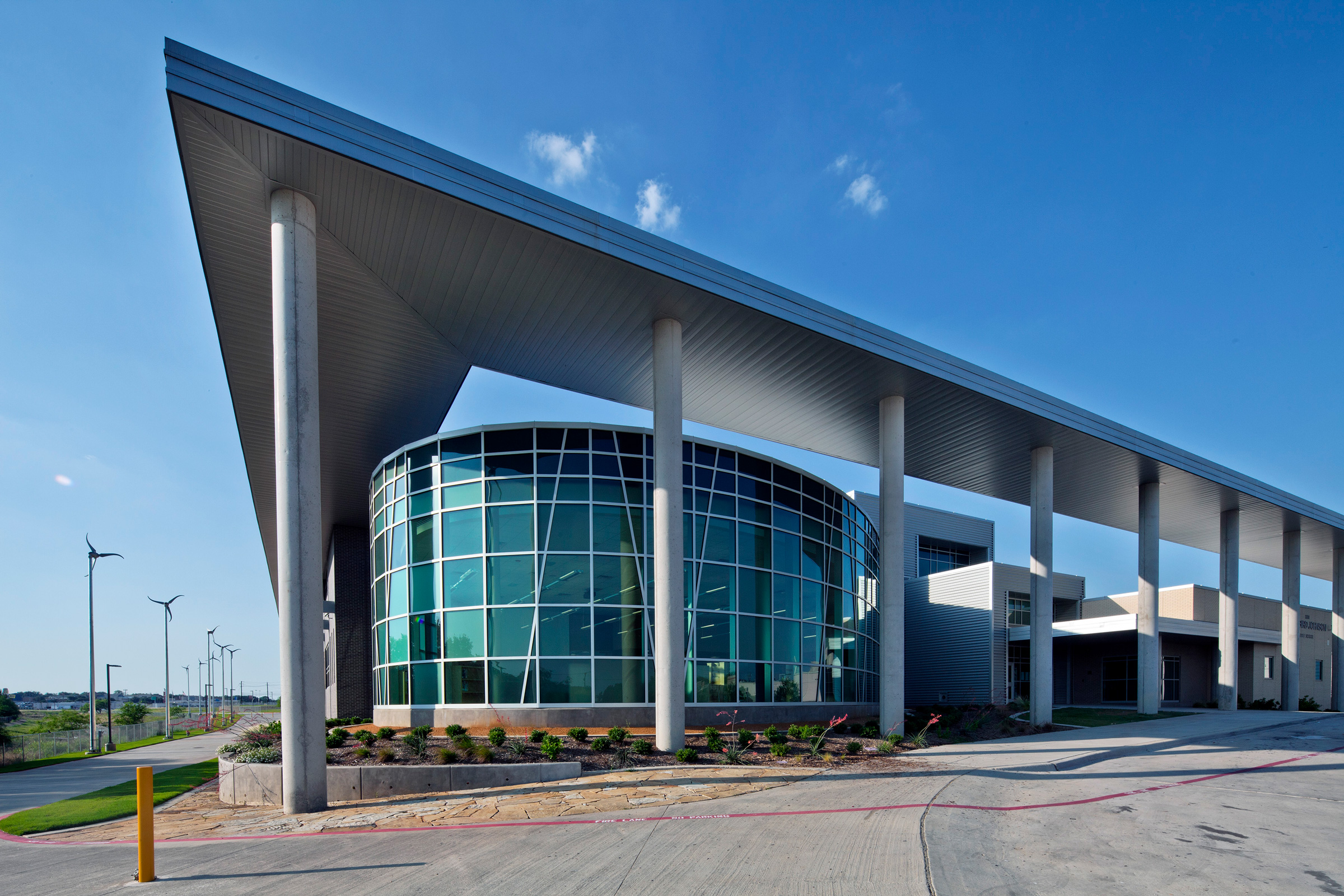Story at a glance:
- Educational structures must perform aesthetically, sustainably, and financially.
- Windows, doors, and curtain walls have taken on additional functions and serve more needs than separating outdoors from indoors.
- Marquee examples show how smart building envelopes, innovative curtain walls, and resilient points of ingress and regress made from aluminum systems enhance education.
Aluminum and aluminum alloys have long been used as building construction materials. Strongly associated with the Art Deco movement due to the sleek appearance and malleability—consider the striking details of New York’s Empire State and Chrysler buildings—aluminum was found to be resilient to harsh climatic conditions with a high weight-to-strength ratio, enabling it to frame large spans of glass used in commercial and other large-scale construction.
It’s not surprising then, that aluminum plays a central role in the range of products made today by Kawneer—an American manufacturer of architectural systems. It adeptly meets the considerable needs of educational buildings, from community elementary schools up through the modern and historically renovated halls of learning at major universities.
The requirements of educational structures, however, differ from those of skyscrapers and retail developments. A high degree of inflow-outflow of elementary students can be rough on doors, for example. Additionally, the need to conserve energy in educational environments factors into how aluminum systems are designed and built, and the basic requirement to provide safe and productive learning environments takes the role of aluminum-based systems far beyond its shiny surfaces.
Considering how educational structures are the pride of many communities and campuses, the appearance of curtain wall systems means aluminum continues to be prized as an attractive building feature. Kawneer’s product manager at the company’s North American headquarters in Norcross, Georgia, Christopher Giovannielli, is the product manager for windows and the sustainability lead. Giovannielli shares how Kawneer systems are supporting sustainable educational environments.
Explain how a Kawneer system works with elementary and secondary schools.
In terms of elementary and secondary schools, property tax payers are keenly aware of the cost of school buildings and consequently scrutinize them on a number of factors: design, safety, and increasingly that the structure has a light environmental footprint. The architects who design schools are themselves very focused on this.
Whether it’s a new school building or a renovation/retrofit, Kawneer framing systems and facades have a big impact on operating expenses. Older structures have single-pane glass on windows and doors, so big improvements come with modern windows and doors that increase energy efficiency. With new buildings, strong energy performance is a requirement.
Can you give us an example of this in action?
Sure. The Lady Bird Johnson Middle School in Irving, Texas, is an architecturally interesting structure that is very large with a monumental curtain wall that allows in lots of light. It’s certified LEED Gold—and with large windows—very Texas! In addition to heavy wall entrances, it has the InLighten™ Interior Light Shelf to bring more natural light to interior spaces.
How does the light shelf work?

A light shelf is a way to reduce dependence on artificial lighting in interior spaces. Photo courtesy of Kawneer
A light shelf is a way to reduce dependence on artificial lighting in interior spaces. It’s a horizontal shelf on the interior of the framing system—up to 30 inches in depth, appended to one of our curtain wall or storefront systems. It bounces solar light to the interior ceiling, further inside from the windows to improve occupant comfort. Natural light is less fatiguing for students and teachers, it also provides savings from less usage of artificial lighting and our Solector® Sun Shading Estimator can provide you with this information.
In some climates solar gain is to be kept out. How do you engineer that?

Kawneer’s Versoleil® SunShade is a bladed solar protection device hung outside over windows. Photo courtesy of Kawneer
We have the Solector® Sun Shading Estimator, which provides estimated savings for schools that use the light shelf and/or our Versoleil® SunShade, a bladed solar protection device hung outside over windows—somewhat an advanced version of an awning.
The tool calculates an estimate of the annual cooling effects of the sunshade based on location. It factors hourly average weather data for the specific location of the building throughout the course of a year, along with the thermal properties of the glazing, framing, and spandrel sections of the window framing system. The calculation tells building owners and architects how products designed into the structure will perform thermally.
Thermal performance is a big challenge. How does Kawneer stay ahead?
As a global company, we in North America build upon our European strengths around thermal performance. Europe has very stringent performance requirements when it comes to thermal testing; learning from our colleagues across the pond we continue to develop our facades to meet and exceed the American requirements.
What assures schools they are doing the greenest thing possible?
Aluminum is infinitely recyclable, and nearly 75% of aluminum products produced in North America are still in use today, either because it holds up or because it is recycled. Our recycled content is a minimum of 50 to 55% range. Most architects and school systems like to know they are using recycled content.
In addition to the data we can provide from the solar selector tool, we benefit from achieving a number of green certifications. They include Environmental Product Declarations, the MTS (Institute for Market Transformation to Sustainability) certification, the Declare certification (supporting the Living Building Challenge), and we are Cradle to Cradle–certified.
Important to the LEED certification point system, we have five manufacturing and 14 service facilities in the US and Canada, bringing manufacturing closer to the customer and job site.
What about systems for historic structure renovations?

The Montgomery Ward Building on the Northwestern University campus uses Kawneer’s high-performance thermal windows, model TR-9460, to stand up to Chicago’s extreme winter. Photo courtesy of Kawneer
The Montgomery Ward Building on the Northwestern University campus in Chicago is a good illustration. They needed to replace the steel and wood windows in the 14-story structure, built in 1927. Kawneer’s high-performance thermal windows, model TR-9460, are resilient to the city’s extreme winter weather and were selected in part because they could retain the appearance of the building’s original Gothic features, while providing ample air and light to the medical and dental learning facilities inside.
The project architect, Anthony Cinnamon, with Wiss, Janney, Elstner Associates said, “The TR-9460 matched well with the existing design,” which was reportedly considered exceptional in the size and number of its windows when the structure was first completed almost 100 years ago.”
What can Kawneer do to address climate catastrophes?
The physical threats to buildings vary by region. All Florida installations, and for the most part up and down the East Coast, comply with the hurricane-driven Florida Product Approval Number code. New York City and Chicago, for example, are required to have high thermal resistance features, while curtain wall and storefront systems we build for the West Coast are designed to withstand seismic activities. We manufacture a wide range of systems to meet requirements in all regions.
As an example, our single-source hurricane resistant solution (350/500 IR Entrances) is designed for schools and other institutions of learning to protect against windborne debris, a characteristic of hurricanes. The entrance door comes with a market leading Water Performance Option, comprised of a pile weathering top seal on the frame, meeting stile covers on the door stiles, and a unique threshold dam that can be installed ahead of heavy rains, hurricanes, or storms.

